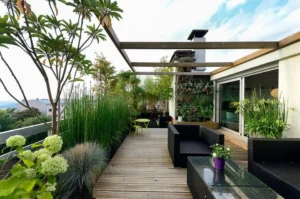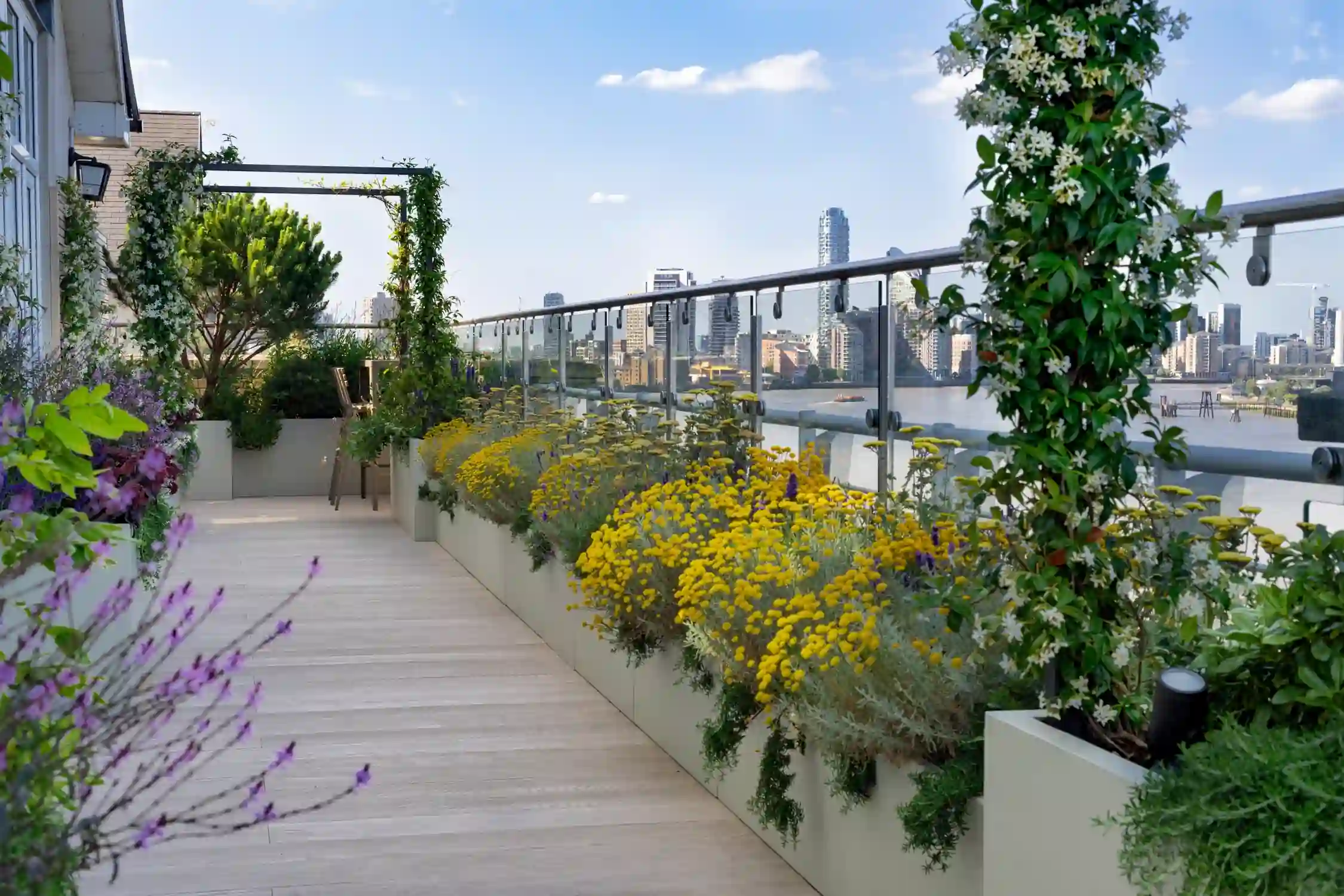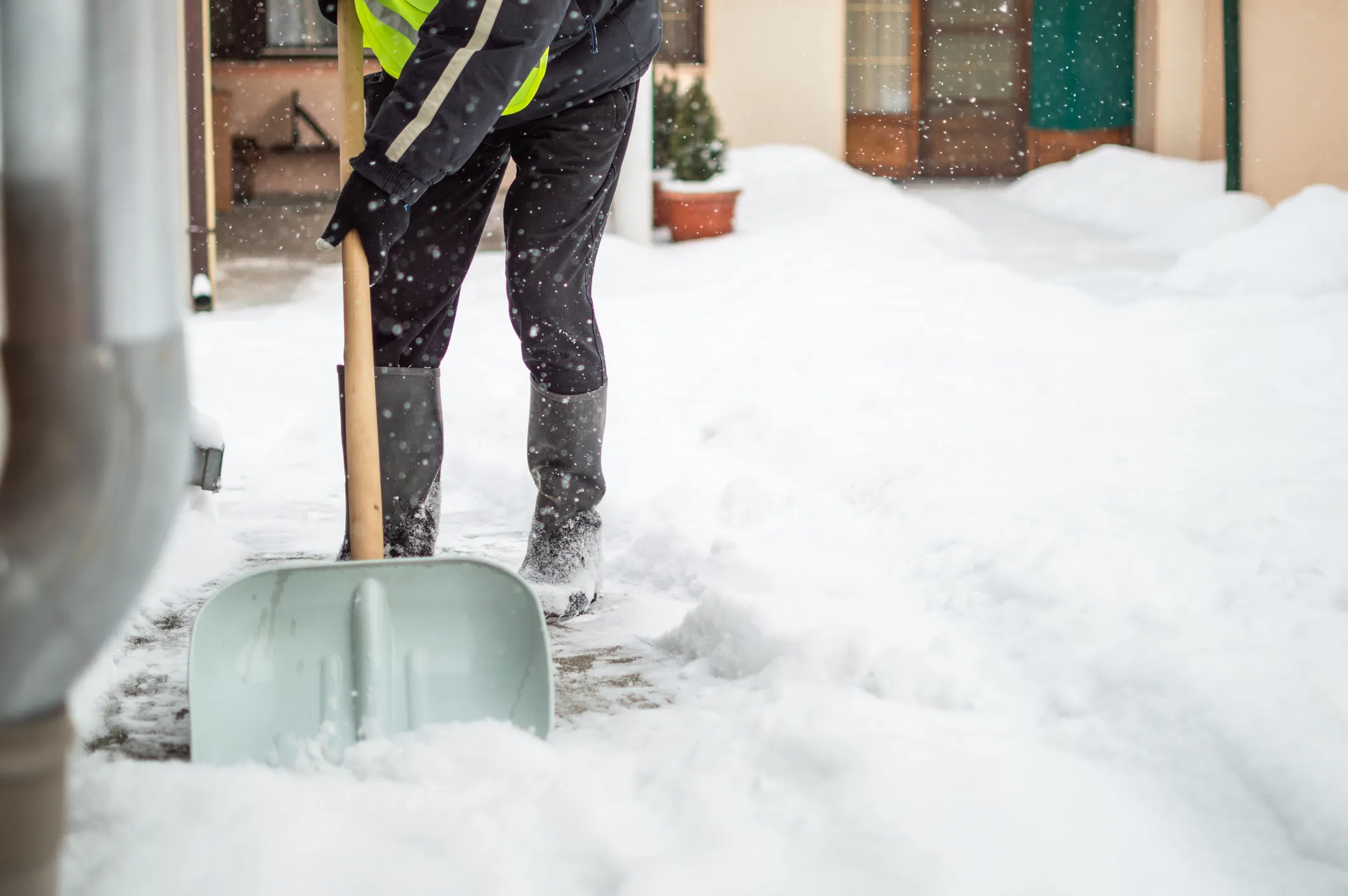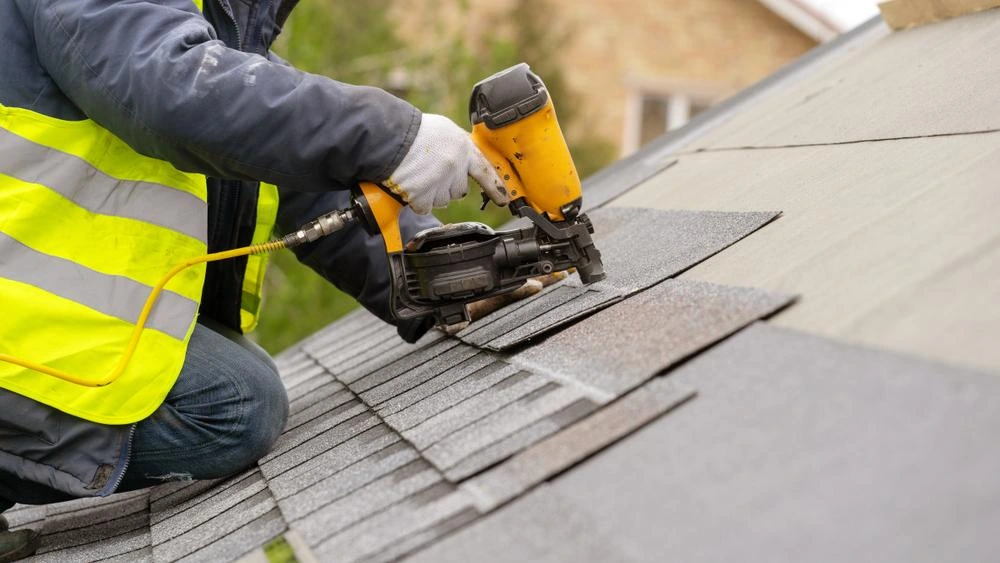Urbanites now crave rooftop gardens as an urban sanctuary. Creating a stylish oasis atop a building is more than adding plants. It’s about blending beauty with purpose. By tackling the challenges of rooftop gardening thoughtfully, designers and residents can craft trendy, welcoming retreats. These spaces not only enhance property value but also offer a peaceful escape from city life. So, what defines a fashionable rooftop garden?
Key Takeaways
- Consider the rooftop’s microclimate, wind direction, and sunlight exposure to create a functional and aesthetically pleasing outdoor space.
- Incorporate a mix of textures, colors, and heights to add visual interest and depth to your rooftop garden.
- Choose chic yet durable materials that can withstand harsh weather conditions and maintain their stylish appeal.
- Create distinct zones for relaxation, entertainment, and gardening to maximize space efficiently and harmonize the area for various activities.
- Add decorative greenery accents with texture, color, and scale to elevate the space instantly and create visual interest.
Rooftop Garden Design Essentials
When planning a rooftop garden, a well-thought-out design is essential to guarantee a functional and aesthetically pleasing outdoor space that complements your building’s architecture. Consider the site’s microclimate, wind direction, and sunlight exposure to create a harmonious balance. Incorporate a mix of textures, colors, and heights to add visual interest, and don’t forget to include seating areas and pathways to create a cozy ambiance.
Overcoming Space Constraints
Frequently, rooftop gardens face the challenge of limited square footage, necessitating innovative strategies to maximize space and create a functional, yet stylish, outdoor oasis. When planning a rooftop garden, consider vertical gardening, tiered planters, and multi-functional furniture to optimize space. By doing so, you can create a chic and inviting retreat that exudes elegance and sophistication.
Choosing Chic yet Durable Materials
Rooftop gardens demand a delicate balance between aesthetics and functionality, particularly when selecting materials that can withstand harsh weather conditions while maintaining their stylish appeal. Durable materials such as recycled plastic, porcelain, and weather-resistant wood are ideal for planning a rooftop garden. These materials guarantee a chic and functional space that can thrive amidst the elements.
Planning a Rooftop Garden Layout
A well-planned layout is essential to creating a rooftop garden that is both visually appealing and functional, as it enables homeowners to maximize space and create distinct zones for relaxation, entertainment, and gardening. When planning a rooftop garden, consider the rooftop’s dimensions, wind direction, and sunlight exposure to create a harmonious and efficient space.
Adding Decorative Greenery Accents
Three essential elements when adding decorative greenery accents to your rooftop garden are texture, color, and scale, as they can instantly elevate the space and create visual interest. Incorporate varying textures like smooth leaves and rough bark, and balance warm and cool colors to create a harmonious palette. When planning a rooftop garden, consider the scale of your accents to guarantee they complement your overall design.

Frequently Asked Questions
How Do I Ensure My Rooftop Garden Is Safe for Children and Pets?
When designing a rooftop garden, prioritize safety for children and pets by incorporating soft, shock-absorbing surfaces, secure railings, and pet-deterrent plants, ensuring a hazard-free zone for playful exploration and relaxation.
Can I Grow Vegetables and Fruits in a Rooftop Garden?
Yes, rooftop gardens can thrive with vegetables and fruits, providing a bounty of fresh produce. Choose compact, wind-resistant varieties and guarantee adequate sunlight, irrigation, and structural support to create a productive and sustainable harvest.
Do I Need to Hire a Professional to Install a Rooftop Garden?
When planning a rooftop garden, determining whether to hire a professional depends on the complexity of the design, structural integrity of the roof, and local building codes, as well as your personal expertise and comfort level with installation.
How Often Should I Water My Rooftop Garden Plants?
When determining the best watering schedule for your rooftop garden, consider factors such as plant species, soil type, climate, and exposure to sunlight, then adjust watering frequency accordingly to promote healthy plant growth and prevent overwatering.
Can I Have a Rooftop Garden if I Live in an Apartment?
While apartment living may present challenges, it’s not a barrier to having a rooftop garden; many apartment complexes offer communal rooftop spaces or consider negotiating with your landlord to create a private oasis.
Conclusion
Optimizing rooftop garden design necessitates a harmonious blend of form and function. By incorporating design essentials, overcoming space constraints, selecting durable materials, and thoughtfully planning layouts, stylish outdoor oases can be created. The strategic addition of decorative greenery accents further enhances visual appeal. Ultimately, rooftop gardens that balance aesthetics with functionality deliver chic, trendy retreats in urban settings, providing a tranquil escape from the hustle and bustle of city life.
You May Also Like To Read:






